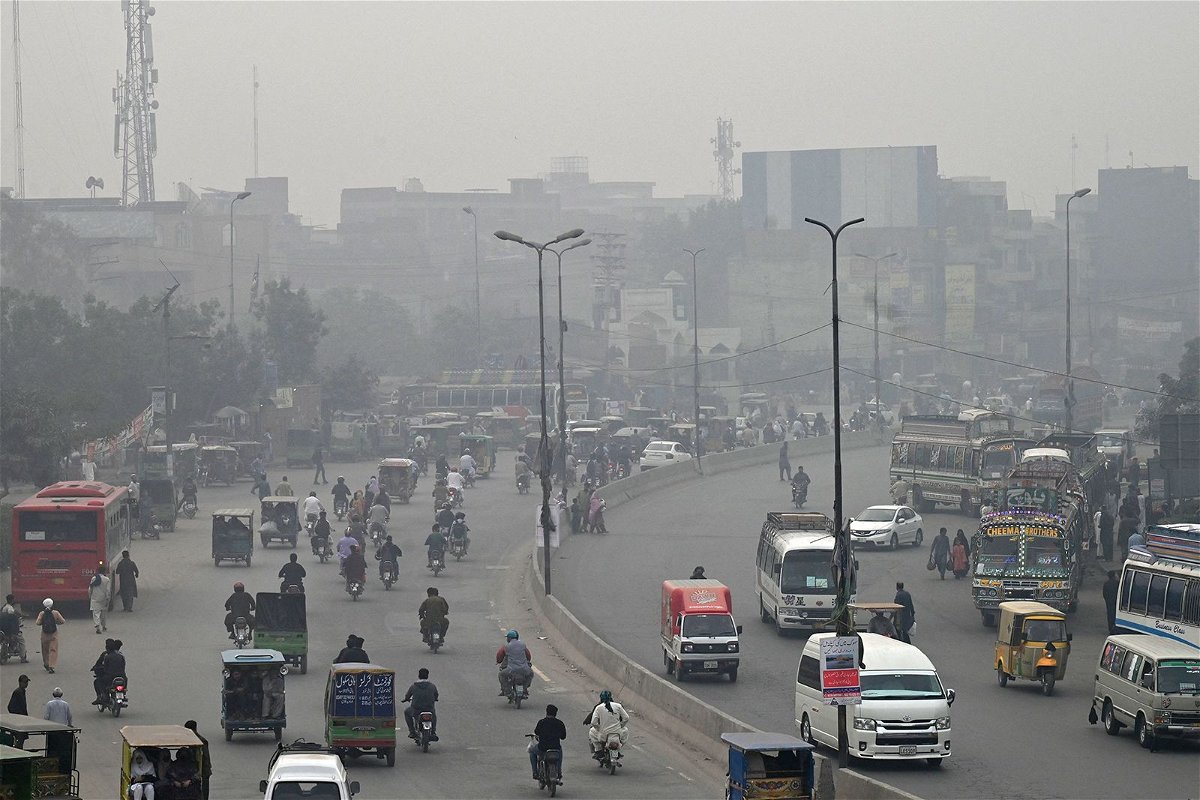In Lahore, the arrival of fall, marked by the enchanting transformation of green foliage into shades of brown, red, yellow, and orange, contrasts sharply with the experience of residents in many parts of Pakistan and northern India. Instead of enjoying the cooler weather and crisp air, they contend with a recurring issue: toxic smog.

Commencing in early November, a dense cloud of toxic air envelops cities like Lahore, Karachi, and New Delhi, consistently ranking high in the list of metropolises with the poorest air quality. The situation worsens each year, especially in northeastern Punjab, prompting the government to implement “smart lockdowns” in severely affected districts, leading to the closure of businesses, schools, and even highways.
The amalgamation of smog and smoke has resulted in numerous individuals suffering from sore throats and irritated eyes, with medical advice urging them to minimize outdoor exposure. A decade ago, Lahore was the primary city grappling with smog, but the problem has since spread throughout the entire province, home to over 127 million people. This year, Karachi, already one of the world’s most polluted cities, also contends with smog.
A report by the University of Chicago’s Energy Policy Institute warned of the potential seven-year reduction in life expectancy for residents in districts like Lahore, Peshawar, Kasur, and Sheikhupura due to increasing air pollution. It emphasized the adverse effects on children, equating exposure to current pollution levels to smoking 30 cigarettes a day.
Meteorologists attribute the sudden surge in smog to winds from neighboring India carrying smoke and pollutants, primarily from stubble burning by Indian farmers. Environmentalists argue that this is not the sole factor, emphasizing the role of changing climate conditions, vehicular emissions (contributing 83% to air pollution in Lahore), and industrial emissions.
While some progress has been made in curbing stubble burning and reducing crop fires, there is a call for a comprehensive approach. Environmentalists advocate for strict bans on crop burning and the introduction of renewable alternatives like biogas. They also emphasize the need for a ‘Decarbonisation and Emissions Reduction Plan’ to address the escalating air quality challenges in cities like Lahore, Karachi, Faisalabad, and Multan. Despite ongoing challenges, the government has initiated long-term measures promoting sustainable agriculture, machinery use for crop residue, and investments in renewable energy sources to reduce dependence on traditional methods contributing to smog.








Leave a Comment